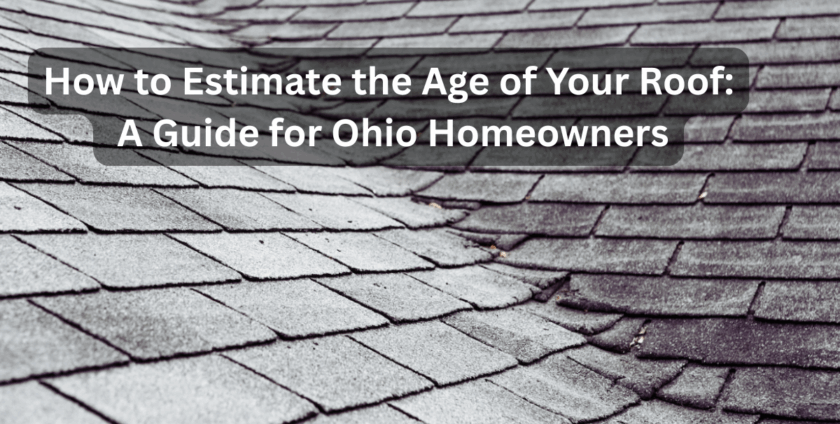
Top 25 Most Searched Residential Roofing Questions in Ohio #25
How to estimate the age of your roof?
As an Ohio homeowner, you know the importance of a sturdy roof. It protects your home from harsh winters, strong storms, and blistering summer sun. But even the best roofs don’t last forever. Knowing your roof’s age is crucial for anticipating repairs, budgeting for replacement, and even for insurance purposes.
So, how can you estimate the age of your roof without tearing it apart? Here are a few key methods you can use:
1. Check Your Home’s Records
This is often the easiest and most accurate way to determine your roof’s age. Dig through your home improvement records for:
- Original Construction Documents: If you’re the first owner, the original building plans or permits often specify the roof installation date.
- Previous Renovation Records: If the roof was replaced by a previous owner, they might have left behind invoices, contracts, or warranty information from a roofing company.
- Appraisal Reports: When you purchased your home, the appraisal report might have noted the age or condition of the roof.
2. Look for Permits (Online or at Your Local Building Department)
Many roof replacements require a building permit. Your local building department (city or county) in Ohio may have an online portal where you can search for permits associated with your address. If not, a quick call or visit to their office can often provide you with this information. The permit will usually include the date it was issued, which can give you a good idea of when the work was done.
3. Examine the Shingles
While not as precise as documentation, the visual condition of your shingles can offer clues:
- Asphalt Shingles: Most asphalt shingle roofs in Ohio have a lifespan of 20-30 years.
- Newer (Under 10 years): Shingles will generally lay flat, have visible granules, and show minimal curling or cracking.
- Middle-aged (10-20 years): You might start to see some minor granule loss, slight curling at the edges, or a few scattered cracked shingles.
- Older (20+ years): Significant granule loss (often visible in gutters), widespread curling, cracking, buckling, and even missing shingles are common signs of an aging roof. Algae or moss growth can also be more prevalent.
- Other Roofing Materials: If you have different materials like metal, slate, or tile, their lifespan can vary significantly. Metal roofs can last 40-70 years, while slate and tile can last 50-100+ years. The signs of aging will be different for these materials, but general wear and tear, rust (for metal), or cracked/missing tiles (for slate/tile) can indicate age.
4. Inspect Your Gutters and Downspouts
A surprisingly good indicator of an aging asphalt shingle roof is the amount of shingle granules you find in your gutters and downspouts. As shingles age, they lose their protective granular coating. The more granules you see, the older the roof likely is.
5. Consider the Age of Neighboring Homes
While not a scientific method, if your house was built at the same time as several homes in your immediate vicinity, and many of them have recently had their roofs replaced, it could be a sign that your roof is also nearing the end of its life expectancy.
When in Doubt, Get a Professional Opinion
While these tips can help you estimate your roof’s age, the best way to get an accurate assessment of its condition and remaining lifespan is to contact a reputable local Ohio roofing contractor. At Rhino Metal Roofing can provide a thorough inspection, identify any potential issues, and give you an informed estimate of your roof’s age and when you might need to start thinking about a replacement.
Don’t wait until you have a leak to consider your roof’s age! Proactive understanding can save you a lot of headaches and money in the long run. Give us a call today 614-360-9305.
[/vc_column_text][/vc_column][/vc_row]
- By: admin
- 0 comment
